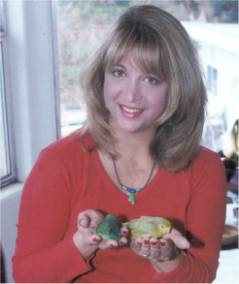Hi Sandee, I'm Pam from Nebraska. An amateur, hobby breeder. I was wondering if you still offer colored bands for Pacific parrotlets? Other than silver? I now have a second hen laying on eggs, (the fathers are brothers from the same clutch) and I would like to have a different color to distinguish between the two. If so, how much? Also, how do you interpret green split to blue, or double split? Is that describing the father first, then the mother? What is double split, or triple split? Thank You Pam
Dear Pam:
Thank you for your email.
I'm assuming that when you said 'you' regarding the bands you meant the International Parrotlet Society. IPS does offer other colors of bands - blue, green, red, black, its just silver is the easiest to read for most people so that is the 'default' color but you're welcome to use another color of you wish. It is the same price as the other bands; there is no additional charge.
Recessive mutations have nothing do with sex; those are sex-linked mutations and we only have one of those, so far, in parrotlets. They are called 'palid' and those have not been imported into the US at this time.
Recessive mutations are very simple - either parent can pass on the color gene but both parents need the same color to produce visual offspring. The term 'split' refers to a bird that carries a color gene but looks like a normal bird. So a blue split would be a green bird that carries the blue gene. A double split is a bird that carries two color genes. True triple splits are rare but its possible to have a bird split to three colors such as dilute, blue and fallow. Double and triple splits can be visual i.e., such as a blue bird carrying a dilute gene but it can also be a green bird that carries blue and dilute.
I have a lot of information on my website at http://www.parrotletranch.com/mutbasics.html on breeding mutations including terms and basic inheritance modes. Most people find it very helpful.
Hope this helps!
Subscribe to:
Post Comments (Atom)




No comments:
Post a Comment
Note: Only a member of this blog may post a comment.